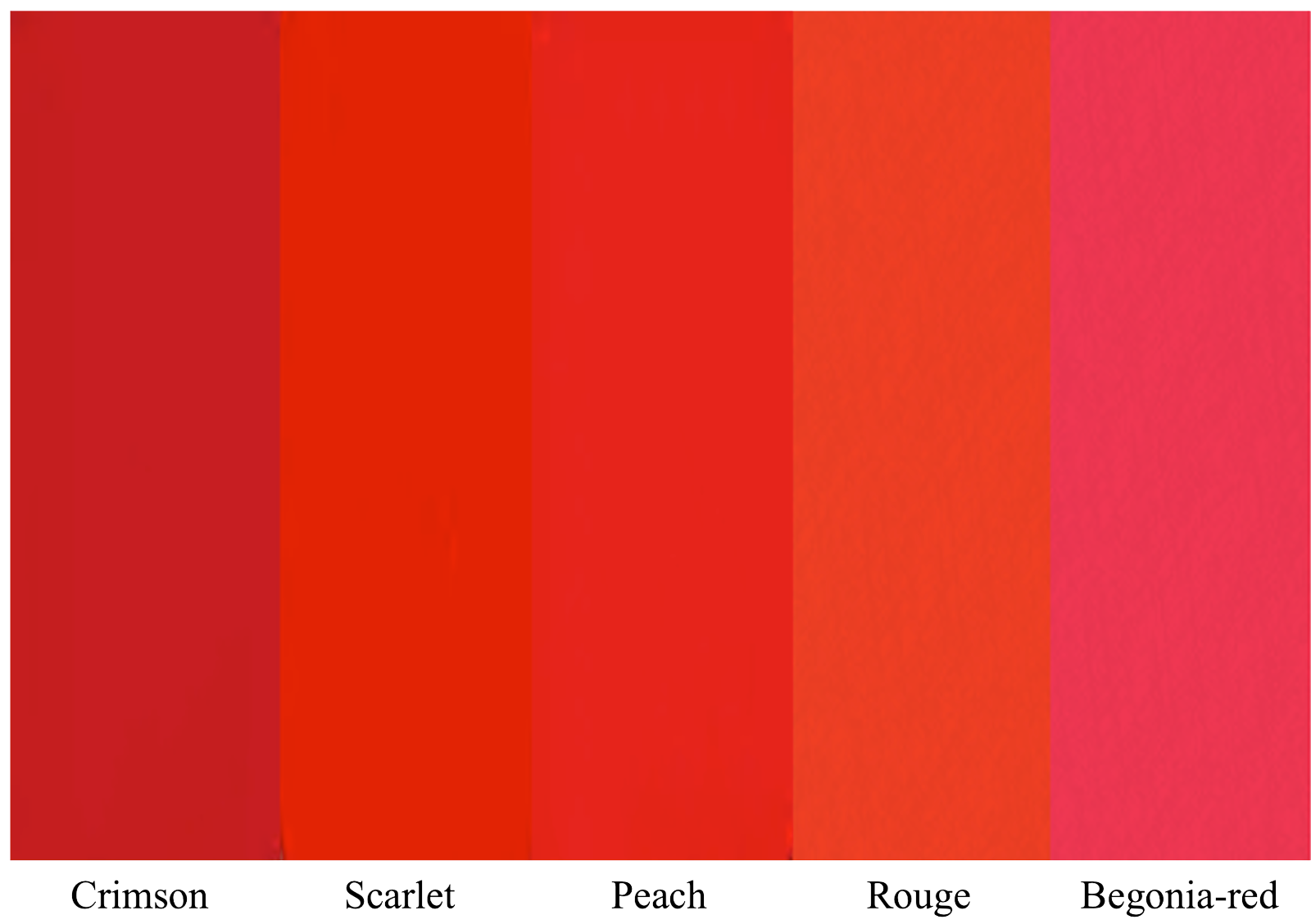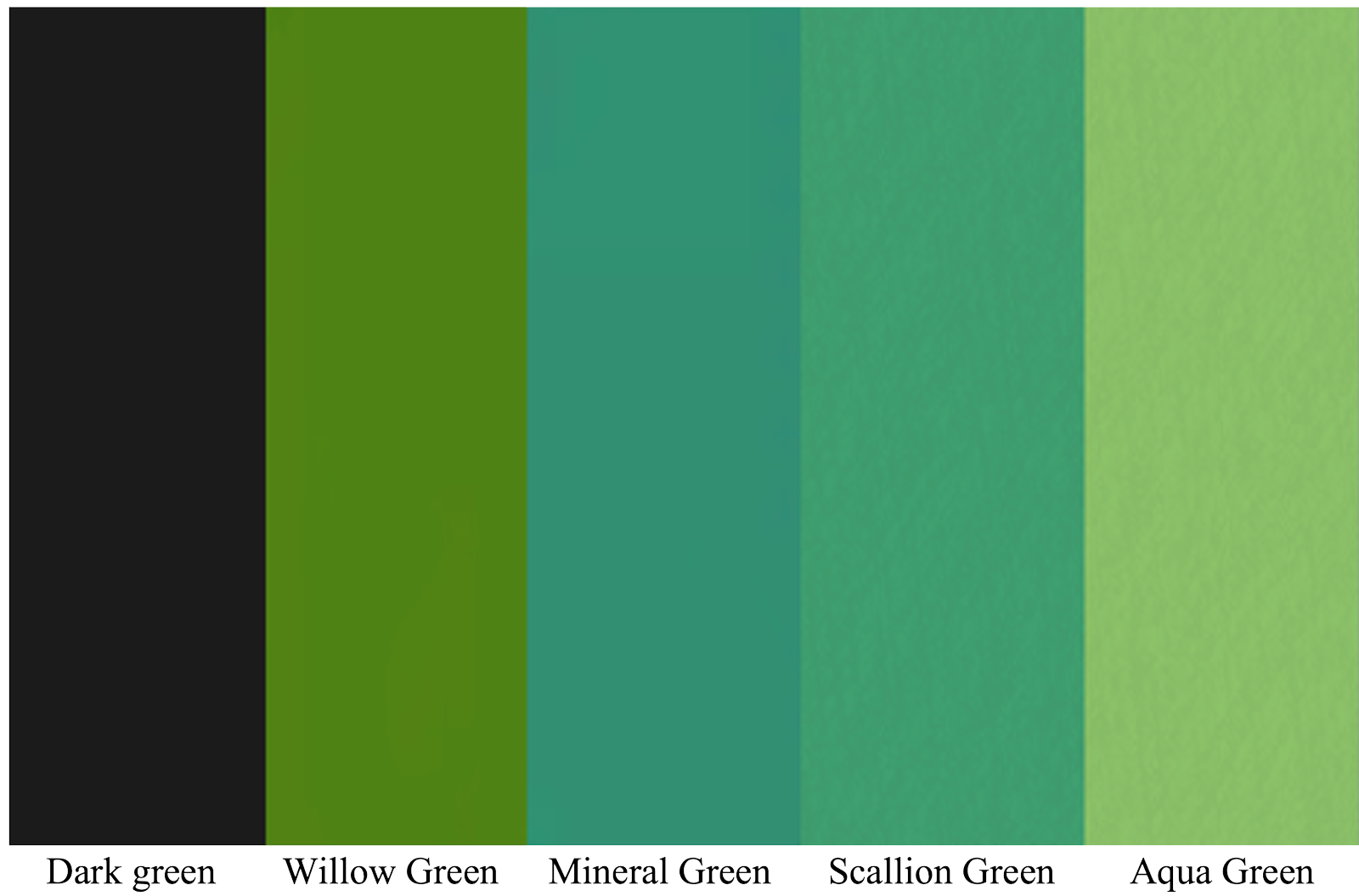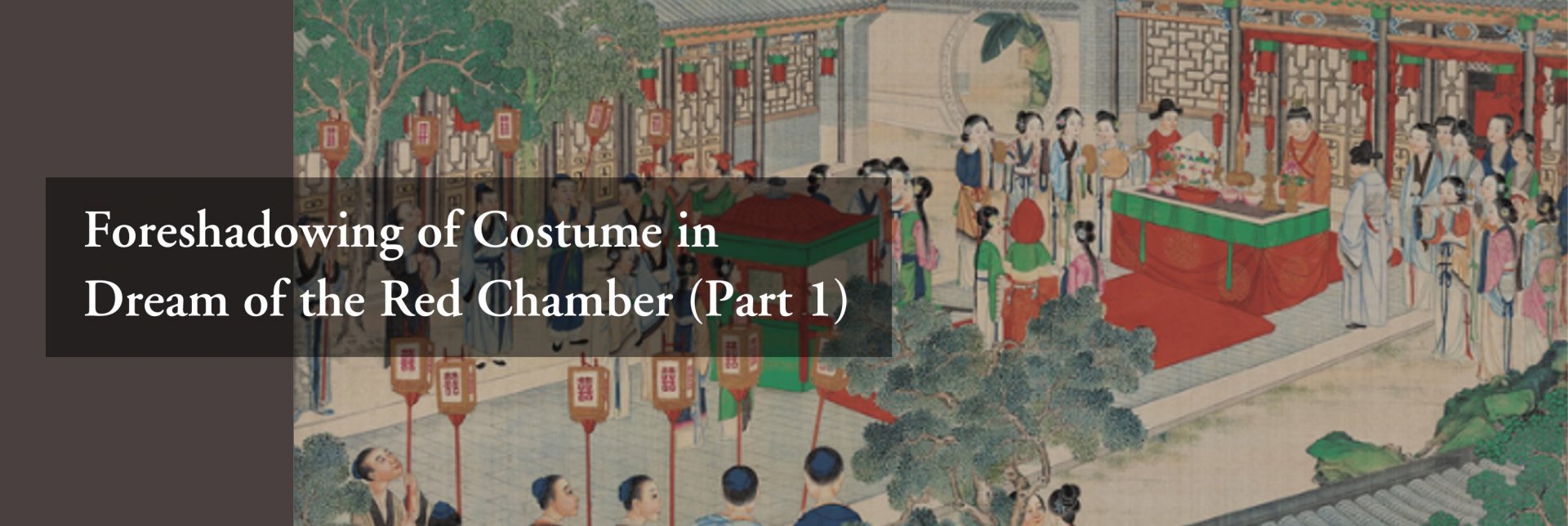Foreshadowing of Costume in
Dream of the Red Chamber (Part 1)
Dream of the Red Chamber was crafted during the Kangxi, Yongzheng, and Qianlong reigns, a period marked by the infamous "Literary Inquisition." Consequently, the background of the novel was intentionally ambiguous, with its descriptions of costumes drawing from various elements of traditional Han clothing while heavily portraying Qing Dynasty fashion. However, whenever it touched upon Qing court prohibitions, Cao Xueqin (曹雪芹,1715-1763) refrained from stepping too far, maintaining a certain distance with ambiguity and subtlety. Nevertheless, upon closer examination, one can discover reflections, contrasts, symbolism, and implications within the descriptions of costumes. This approach to depicting clothing became a distinctive feature of Dream of the Red Chamber. While many contemporary scholars study "Redology" from various perspectives such as poetry, lyrics, songs, couplets, and puzzles, there are relatively fewer discussions from the angle of costume.

《Dream of the Red Chamber》 (《紅樓夢圖》)
Sun Wen (孫溫,1818-?), Qing Dynasty
The Dominance of "Red" (紅飾) as the Theme
Dream of the Red Chamber is aptly named, as "Red" is the primary color throughout the entire novel and a shared symbol among all characters in the Great Viewn Garden. Zhou Ruchang (周汝昌,1918-2012) stated in The Artistry of the Red Chamber (《紅樓藝術》) that "Red" is one of the focal points of the entire work. The novel features an unprecedented abundance of red shades, including crimson, scarlet, peach, fuchsia, vivid magenta, begonia-red, bright-red, apricot, rose-red, rouge, pomegranate-red, cerise and more. Cao Xueqin's family had been involved in the Jiangning weaving department (江寧織造署) for three generations, serving in official positions for 65 years, deeply influenced by the textile culture. Immersed in this atmosphere since childhood, Cao Xueqin possessed a thorough understanding of costume styles, silk fabrics, textile patterns, and decorations, especially those worn by the upper echelons of society.
For instance, when describing Jia Baoyu (賈寶玉), the author predominantly used the color red for his costumes. When Baoyu first meets Lin Daiyu (林黛玉), he is dressed in a vivid magenta scattered-flower half-old robe (銀紅撒花半舊大襖), tied hair with red silk ribbon, and large red shoes. When Daiyu combs Baoyu's hair, he wears a hairpin with deep red tassels. During the Grand View Garden feast, Baoyu wears a large red short, lined jacket. And when Baoyu decides to become a monk, he wears a crimson gibbon-felt cloak (大紅猩猩氈斗篷). Clearly, the extensive use of "Red" in costume descriptions showcases Cao Xueqin's profound knowledge and excellent writing skills in regard to attire.

Cao Xueqin's detailed portrayal of Baoyu's costume, mainly emphasizing the color "Red," which is complemented by a similar approach to describing female characters' coats. For example, when Wang Xifeng (王熙鳳) makes her first appearance, she wears a crimson tight gown trimmed with golden threads and patterned in "hundreds of butterflies flying among flowers" (縷金百蝶穿花大紅洋緞窄褂襖). When visiting the Pear Fragrance Court (梨香院) to see Xue Baochai (薛寶釵), Daiyu is wrapped in a large red feather silk double-breasted gown (大紅羽緞對襟褂子). When Hua Xiren (花襲人) returns home to visit her family, she wears a kesi trimmed with ermine fur short coat patterned with peach-red hundred-flower (桃紅百花刻絲銀鼠褂).
The red color symbolizes the vivacity, splendor, and brightness of the characters in the Grand View Garden. However, beneath this glistening exterior, it also reflects the anguish of love and the corruption of feudal society. The tragic love story of Baoyu, Daiyu, and Baochai is a product of feudal society. Daiyu's death while wearing red robes implies a lingering resentment. By using "Red" as the primary color for costume, the novel portrays a seemingly lively and bustling scene, which in reality reflects a desolate and decaying reality. Cao Xueqin extensively uses the color red not only in costume but also in various decorative elements. For instance, when Grannie Liu (劉姥姥) enters the Grand View Garden for the first time, large red scattered-flower soft curtains hang outside the door, and the south window is covered with large red felt strips. Almost the entire visual field is filled with red. Similar descriptions can be found throughout the novel. It can be said that the color red permeates the work to a significant extent, becoming the primary color tone, but all of this is depicted with bright red hues as a mask.

National Museum of China
The "Green Fate" (綠孽)
In addition to the primary focus on red costumes, "green" coats also play an essential complementary role in the novel. Just as peonies need green leaves for support, green serves as a natural color symbolizing tranquility, nature, and serenity, giving people a fresh and gentle feeling. In the novel, green coats are frequently used, colors including aqua green, pine green, Scallion green, emerald green, willow green, and flash green, among other descriptions. Cao Xueqin skillfully uses the combination of red grown and green coats to depict character images, with "red for males" and "green for females." Through vivid color contrasts, the author portrays different characters' status, personalities, and situations.

For example, the descriptions of Wang Xifeng's coats mostly feature bright and vibrant colors like red, lazurite, and green, highlighting her opulence and unique personality. On the other hand, the depiction of You Sanjie (尤三姐)'s coats is relatively plain and simple, mainly featuring silver-red, showcasing her modest and unpretentious character. Furthermore, Lin Daiyu's image is further highlighted by the significance of green coats. Originally a vermilion (red) fairy grass by the Ling River, she absorbed the essence of heaven and earth, transforming into a human with a green image. She is enamored with the Xiaoxiang Pavilion (瀟湘館) in the Grand View Garden, where the green bamboo shadows complement her agile beauty. Her coats are simple and fresh, echoing the greenery and displaying a transcendent natural beauty. By contrasting red robes with green coats, the author not only creates a striking visual impact for readers but also showcases the characters' personalities and meanings through the arrangement of colors. Red symbolizes warmth and prosperity, while green represents tranquility, purity, and harmony. The combination of the two colors should naturally radiate positive energy. However, the novel's ending is a tragedy, reflecting the author's discontent and criticism of feudal society. The theme of Dream of the Red Chamber revolves around the color "Red," and Lin Daiyu is depicted as the reincarnation of a vermilion (red) fairy grass. Some may argue her name could have been "Lin Hongyu'' (Lin Red Jade, 林紅玉), but she intentionally omitted the "Red" character, naming herself Lin Daiyu. "Dai'' represents a dark green color close to black, creating an ominous feeling and suggesting a turbulent fate. The novel's rich costume descriptions evoke emotions and create imagery that allows readers to better understand the complexity of characters and the beauty of life.

National Museum of China
A Reflection of Status and Rank
In Dream of the Red Chamber, the descriptions of costumes not only enrich the characters' images but also highlight their personality traits and social status. The choice of fabric, patterns, and colors of their attire is closely related to their respective positions in society. The novel features an astonishing variety of fabric types, including silk, leather, fur, and cotton textiles. Among the luxurious silk fabrics alone, there are cloud gauze, brocade, satin, muslin, and chiffon, each boasting unique qualities. Fur and leather materials range from ermine, mink, sable, and sheep to deer. The novel even mentions exotic materials like duck-neck feathers and peacock feathers. Cotton-made products are also present, including elaborately gold thread embroidered quilted grown, reflecting the grandeur of the upper class.

National Museum of China
In the Qing Dynasty's "Da Qing Hui Dian" (The Imperial Code of the Qing Dynasty, 《大清會典》), the costumes prescribed for emperors, empresses, princes, and high-ranking officials includes gowns, dragon coats, court skirts, and supplementary garments, most of which should be in lazurite or slate blue. Throughout the Qing Dynasty's two hundred and sixty years of rule, apart from the exclusive use of golden yellow for the royal family, the primary colors for clothing were lazurite and slate blue. Among these, lazurite was particularly favored and considered one of the most prestigious colors among the noble class. In the novel's third chapter, Wang Xifeng is described wearing a crimson tight jacket trimmed with golden threads and patterned in "hundreds of butterflies flying among flowers" (縷金百蝶穿花大紅雲緞窄褃襖), overlaid with a linned ermine fur robe in lazurite ground with multicolour patterned Kesi (五彩刻絲石青銀鼠褂).
In the sixth chapter, she wears a peach-red floral pattern grown (桃紅灑花襖), paired with a silk kesi trimmed with grey squirrel fur cloak (石青刻絲灰鼠披風). In the fifty-first chapter, she even gifts Hua Xiren with an eight roundels linned with rabbit fur robe. As for Baoyu, several instances describe him wearing lazurite Kesi coats. For instance, in the third chapter, he wears a two-tone gold threads crimson hundred-butterflies-scattered-floral tight jacket with arrow cuffs (二色金百蝶穿花大紅箭袖), covered with a lazurite silk Kesi robe linned with ermine fur (石青起花八團倭緞排穗褂). In the nineteenth chapter, Baoyu is clad in a bright red gold python fox armpit fur grown with arrow cuffs, topped with a lazurite squirrel fur robe with tassels. As prominent figures in the Rongguo Mansion (榮國府), Wang Xifeng and Baoyu wear lazurite outer coats to highlight their unique positions.
Lazurite color is a color that leans toward the grayish blue spectrum and is dyed using indigo dye. The unique formula and process ensure that it meets the standards of imperial nobility. As a sophisticated attire color, lazurite reflects the noble society's pursuit of color culture and taste. Throughout the novel, the description of attire color appropriately showcases the social etiquette and fashion of the Qing Dynasty.

The Palace Museum

The Palace Museum
Xiren, Baoyu's personal maid, is often seen wearing a coat Wang Xifeng gifted her: a "peach-red hundred-child Kesi silk ermine fur coat." (桃紅百子刻絲銀鼠襖子) Despite being old attire, the "hundred-child pattern" (百子紋) demonstrates her special position in Wang Xifeng's heart. Ultimately, the color of attire also corresponds to characters' status. Cao Xueqin skillfully employs color to highlight characters' positions and personalities. For instance, Wang Xifeng's attire predominantly features bright anlively colors such as red, lazurite, and green, emphasizing her grandeur and distincpersonality. As a maid, Xiren's attire is relatively simple and plain, mainly consisting of silver-red, highlighting her modesty and unassuming nature while setting her apart from other maids. Xiren serves as Baoyu's personal maid, viewed by Wang Xifeng as Baoyu's concubine, which is why she holds the special status of being "half a mistress." (半主子)

《Dream of the Red Chamber》 (《紅樓夢圖》)
Sun Wen (孫溫,1818-?), Qing Dynasty
In summary, the costume descriptions in Dream of the Red Chamber serve to enrich the characters' images, emphasize their personality traits, and demonstrate their social status. Through the skillful use of fabric, patterns, and colors, the author creates diverse and vivid character images, making them lifelike. Additionally, this presentation also showcases the hierarchical system and cultural context of feudal society.
Major References
1、曹雪芹、高鶚:《紅樓夢》,臺北:聯經出版社,1991年。
2、季學源:《紅樓夢服飾鑒賞》,杭州:浙江大學出版社,2012年。
3、楊雅筑:《圖解紅樓夢》,臺北:易博士出版社,2018年。
4、陳開麟:〈《红楼梦》中的服饰文化〉,百度·TA說,2019年1月14日,https://wapbaike.baidu.com/tashuo/browse/content?id=465f421a89dfa5bbf149220c,2023年9月13日。
5、王雲英:〈从《红楼梦》谈满族服饰〉,中國民俗學網,2019年10月13日,https://www.chinafolklore.org/web/index.php?NewsID=6008,2023年9月13日。
6、鄔員:〈衣食《紅樓夢》于細微處再多品一點點〉,騰訊新聞,2021年5月3日,https://new.qq.com/rain/a/20210503A05JPV00,2023年9月13日。
7、夜薇雪:〈《红楼梦》:还原曹雪芹笔下的服饰之美〉,每日頭條,2018年8月30日,https://kknews.cc/culture/op459g5.html,2023年9月13日。
All articles/videos are prohibited from reproducing without the permission of the copyright holder.




Welcome to leave a message:
Please Sign In/Sign Up as a member and leave a message